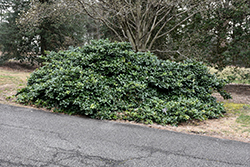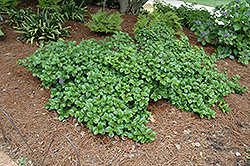Fri & Sat 8am - 8pm
Sun 8am - 7pm
Anytown, USA 12345
fax: 261.787.0463
e-mail: info@successgc.com


Plant Finder

Height: 3 feet
Spread: 10 feet
Sunlight:
![]()
![]()
Hardiness Zone: 4b
Description:
Fabulous groundcover with showy red berries that persist throughout the winter and attracts birds; it has spiny, dark green leaves and needs a male pollinator; does best in evenly moist, acidic soil
Ornamental Features
Maryland Dwarf American Holly is primarily grown for its highly ornamental fruit. It features an abundance of magnificent red berries from early fall to late winter. It has attractive dark green evergreen foliage. The spiny oval leaves are highly ornamental and remain dark green throughout the winter.
Landscape Attributes
Maryland Dwarf American Holly is a dense multi-stemmed evergreen shrub with a ground-hugging habit of growth. Its average texture blends into the landscape, but can be balanced by one or two finer or coarser trees or shrubs for an effective composition.
This is a relatively low maintenance shrub, and is best pruned in late winter once the threat of extreme cold has passed. It is a good choice for attracting birds and bees to your yard. It has no significant negative characteristics.
Maryland Dwarf American Holly is recommended for the following landscape applications;
- Rock/Alpine Gardens
- General Garden Use
- Groundcover
- Naturalizing And Woodland Gardens
Planting & Growing
Maryland Dwarf American Holly will grow to be about 3 feet tall at maturity, with a spread of 10 feet. It tends to fill out right to the ground and therefore doesn't necessarily require facer plants in front. It grows at a slow rate, and under ideal conditions can be expected to live for approximately 30 years.
This shrub does best in full sun to partial shade. It requires an evenly moist well-drained soil for optimal growth. It is very fussy about its soil conditions and must have rich, acidic soils to ensure success, and is subject to chlorosis (yellowing) of the foliage in alkaline soils. It is somewhat tolerant of urban pollution, and will benefit from being planted in a relatively sheltered location. Consider applying a thick mulch around the root zone in winter to protect it in exposed locations or colder microclimates. This is a selection of a native North American species.

